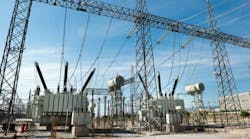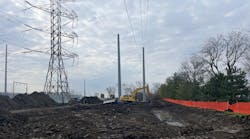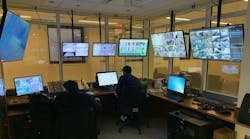Designing better seismically engineered substations — that’s the core purpose of a committee under IEEE, which recently assembled for a meeting in Portland, Oregon. About 40 engineering and technical experts representing utilities, consulting firms, manufacturers and academia from Canada, Germany, Mexico, New Zealand, the United States and elsewhere attended the meeting in the Bonneville Power Administration’s Rates Hearing Room.
“The goal of the IEEE 693 Seismic Design of Substations committee is to ensure that a city such as Portland continues to be livable after a seismic event,” says Kamran Khan, an engineer with Canada’s Trench Group, a manufacturer of high-voltage instrument transformers, bushings and coils.
Engineers and experts are revising IEEE 693, a seismic design standard for substations that includes qualifications for each type of substation equipment (seismic performance requirements for equipment function, installation methods and documentation). Given the new seismic testing methodologies and technologies that have been introduced since it was published 10 years ago, the standard is due for a revision.
Engineering and technical experts from utilities, consulting firms, manufacturers and academia are revising IEEE 693, a seismic design standard for substations that includes qualifications for each type of substation equipment.
“The entire industry is collaborating to bring the standard up to speed with the best seismic engineering practices,” says Christophe Tudo-Bornarel, an engineer with Transpower New Zealand Ltd.
Before the late 1990s, each utility had its own seismic requirements, which led manufacturers to design custom solutions that were costly and inefficient to develop. The IEEE 693 standard is a win for utilities, manufacturers and the public because it allows utilities to select standardized criteria and equipment makers to engineer to defined needs and conditions. And there’s a huge benefit to the public.
“The seismic qualification process is far more efficient and costs are distributed internationally, so you end up with better seismically engineered products at a lower cost,” Khan adds.
To the committee, the value of an improved standard is obvious.
“So much of our daily lives depends on reliable electric power,” says committee chair Eric Fujisaki, a civil engineer with Pacific Gas & Electric Co. in Northern California. “Our hope is that the seismic resiliency of the electric system can be enhanced by the work of this committee.”
BPA is an active member of the IEEE 693 committee. Dr. Leon Kempner, principal structural engineer and BPA’s seismic program manager, serves as co-chair; and Mike Riley, a structural design engineer in BPA’s Transmission Line Design group, is a member.


